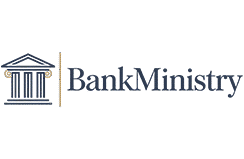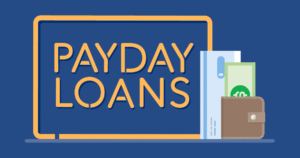Introduction to SBA Loans: Why They Matter for Small Businesses
Starting or growing a small business in the United States often requires capital, but securing affordable financing can be a challenge. SBA loans, backed by the U.S. Small Business Administration, are a lifeline for entrepreneurs, offering low interest rates, flexible terms, and government guarantees that make them accessible to businesses that might not qualify for traditional bank loans. Whether you’re looking to buy equipment, expand operations, refinance debt, or recover from a disaster, understanding the SBA loan guide is critical to navigating this powerful funding tool.
This comprehensive guide will walk you through every aspect of SBA loans, from their purpose and types to eligibility, application processes, and practical tips for success. Drawing on official SBA resources, industry insights, and real-world examples, this article is designed to be your go-to resource for securing SBA funding in 2025. With recent policy changes and economic shifts, staying informed is more important than ever. Let’s dive into the what, why, and how of SBA loans to empower your business journey.
What Are SBA Loans and Why Are They Important?
The Basics of SBA Loans
SBA loans are not direct loans from the government but rather loans issued by participating lenders—such as banks, credit unions, or community organizations—with a portion guaranteed by the SBA. This guarantee reduces the lender’s risk, encouraging them to lend to small businesses that might otherwise struggle to secure financing. The SBA’s backing can cover up to 85% of a loan’s value for 7(a) loans and 40% for 504 loans, making these loans a safer bet for lenders and more affordable for borrowers.
The SBA’s mission is to foster small business growth, job creation, and economic resilience. By offering SBA loans, the agency helps businesses access capital for a variety of purposes: starting a new venture, purchasing real estate, acquiring equipment, or recovering from economic or natural disasters. In 2025, with economic challenges like tariff uncertainties and rising interest rates, SBA loans remain a stable and cost-effective financing option.
Why SBA Loans Matter
Imagine you’re a small business owner in Texas running a family-owned bakery. You want to open a second location but lack the cash for a down payment on a commercial property. A traditional bank loan might require a 20% down payment and a 700+ credit score, which you don’t have. An SBA 7(a) loan, with its lower down payment (10%) and flexible credit requirements, could make your expansion possible. The government guarantee means the lender is more likely to approve you, and the longer repayment terms (up to 25 years for real estate) keep monthly payments manageable.
The importance of SBA loans lies in their accessibility and affordability:
- Low interest rates: Rates for 7(a) loans in 2025 range from 10.5% to 14%, compared to online lenders charging up to 99% APR.
- Long repayment terms: Up to 25 years for real estate, reducing monthly payments.
- Flexible uses: From working capital to disaster recovery, SBA loans cover diverse needs.
- Credit flexibility: While good credit (690+ FICO) is ideal, some programs, like microloans, accommodate newer businesses or lower credit scores.
However, SBA loans come with challenges, such as strict eligibility criteria and a rigorous application process, which we’ll explore in detail.
Types of SBA Loans: Choosing the Right Program for Your Business
The SBA offers several loan programs, each tailored to specific business needs. Below, we break down the four main programs, their purposes, terms, and ideal use cases, ensuring you can choose the best fit.
SBA 7(a) Loan Program: The Most Versatile Option
The SBA 7(a) loan is the agency’s flagship program, designed for general business purposes. It’s ideal for businesses needing flexibility in how funds are used.
- Purpose: Working capital, equipment purchases, real estate, business acquisitions, debt refinancing, or expansion.
- Loan Amount: Up to $5 million.
- Repayment Terms: Up to 7 years for working capital, 10 years for equipment, and 25 years for real estate.
- Interest Rates: Variable or fixed, based on the prime rate plus a markup (10.5%–14% in 2025, per industry sources).
- Eligibility: Must be a for-profit small business meeting SBA size standards, with good credit and at least two years in business. Owners with 20%+ ownership must provide a personal guarantee.
- Recent Changes (June 2025): Stricter underwriting requires a minimum FICO Small Business Scoring Service (SBSS) score of 165 (up from 155), and guarantee fees (0.25%–3.75%) have been reinstated for loans of $1 million or less due to increased defaults.
Example: A tech startup in California needs $1 million to purchase servers and hire staff. An SBA 7(a) loan with a 10-year term and 11.5% interest rate provides affordable monthly payments, unlike a short-term online loan with a 50% APR.
SBA 504 Loan Program: For Major Asset Purchases
The SBA 504 loan is designed for purchasing long-term fixed assets like real estate or heavy equipment to promote growth and job creation.
- Purpose: Real estate purchases, construction, or equipment acquisition.
- Loan Amount: Up to $5 million ($5.5 million for energy-efficient or manufacturing projects).
- Structure: 50% funded by a third-party lender, 40% by a Certified Development Company (CDC), and 10%–20% by the borrower (higher for startups or special-purpose properties).
- Repayment Terms: 10 or 20 years for equipment, 20 or 25 years for real estate.
- Interest Rates: Typically fixed, blending the lender and CDC portions (specific rates vary but are competitive, often below 7(a) rates).
- Eligibility: Businesses must have a tangible net worth below $15 million and average net income under $5 million over the past two years. Job creation or community development goals are required.
Example: A manufacturing company in Ohio wants to buy a $3 million factory. A 504 loan covers 90% of the cost (50% bank, 40% CDC), with the borrower contributing 10%. The 20-year term keeps payments low, supporting cash flow.
SBA Microloan Program: Small Loans for Startups and Underserved Businesses
The SBA Microloan program targets startups, new businesses, or underserved groups (e.g., minority-owned businesses, child care centers).
- Purpose: Working capital, inventory, supplies, furniture, or equipment.
- Loan Amount: Up to $50,000 (average around $13,000).
- Repayment Terms: Up to 6 years.
- Interest Rates: Typically 8%–13%, set by the nonprofit intermediary lender.
- Eligibility: More flexible than 7(a) or 504 loans, accommodating businesses with lower credit or less operational history. Administered by community-based nonprofits.
Example: A woman-owned catering business in Florida needs $20,000 for kitchen equipment. A microloan from a local nonprofit offers a 6-year term at 9% interest, far more affordable than a 30% APR online loan.
SBA Disaster Loans: Recovery Funding for Businesses and Individuals
SBA Disaster Loans provide relief for businesses, homeowners, and renters affected by declared disasters.
- Purpose: Repair physical damage, cover economic losses (Economic Injury Disaster Loans, EIDL), or support businesses with military reservist employees.
- Loan Amount: Up to $2 million for businesses (physical or economic injury).
- Repayment Terms: Up to 30 years, with low interest rates (often below 4% for businesses unable to obtain other credit).
- Eligibility: Businesses or individuals in declared disaster areas, with demonstrated need. No strict credit score minimum, but repayment ability is assessed.
Example: A retail store in Louisiana damaged by a hurricane secures a $500,000 disaster loan at 3.75% interest over 30 years to rebuild and replace inventory, preserving jobs and operations.
Eligibility for SBA Loans: Are You Qualified?
Securing an SBA loan requires meeting specific criteria, which vary by program but share common themes. Understanding these requirements is crucial to avoid wasted time or rejections.
General Eligibility Criteria
- Business Type: Must be a for-profit small business operating in the U.S. or its territories.
- Size Standards: Must meet SBA size standards, which vary by industry (e.g., revenue under $7.5 million for retail, fewer than 500 employees for manufacturing). Use the SBA’s size standards tool to confirm eligibility.
- Repayment Ability: Demonstrate sufficient cash flow to repay the loan, supported by financial statements and projections.
- Creditworthiness: Good credit is typically required (690+ FICO for 7(a) and 504 loans; microloans are more flexible). No delinquencies on government debt.
- Inability to Obtain Other Financing: Must show you cannot secure reasonable financing without SBA assistance (e.g., rejected by traditional lenders).
- Owner Requirements: Owners with 20%+ ownership must provide a personal guarantee. No significant criminal history is allowed.
Program-Specific Requirements
- 7(a) Loans: At least two years in business, strong financials, and an SBSS score of 165+ (as of June 2025). Startups may qualify with exceptional business plans and collateral.
- 504 Loans: Tangible net worth below $15 million, average net income under $5 million over two years, and a job creation/community development goal (e.g., one job per $75,000 of SBA funding).
- Microloans: Flexible criteria, ideal for startups or businesses with fair credit. Community lenders assess applications case-by-case.
- Disaster Loans: Located in a declared disaster area, with demonstrated physical or economic loss.
Common Mistake to Avoid: Submitting incomplete financials or failing to check size standards can lead to automatic rejection. Use the SBA’s online tools to verify eligibility before applying.
The SBA Loan Application Process: Step-by-Step Guide
Applying for an SBA loan can be daunting due to its documentation and timeline, but a structured approach can increase your chances of approval. Here’s a step-by-step guide.
Step 1: Assess Your Needs and Eligibility
- Identify the loan purpose (e.g., equipment, real estate, working capital) and choose the appropriate program (7(a), 504, microloan, or disaster loan).
- Use the SBA’s size standards tool and Lender Match tool to confirm eligibility and find lenders.
- Example: A coffee shop owner in Colorado needs $100,000 for renovations. A 7(a) loan fits due to its flexibility, but they confirm their revenue is under the $7.5 million retail threshold.
Step 2: Gather Required Documentation
SBA loans require extensive paperwork, which varies by program but typically includes:
- Business Financials: Balance sheets, profit/loss statements, cash flow projections (past two years).
- Personal Financials: Tax returns, personal financial statements for owners with 20%+ stake.
- Business Plan: Detailed plan outlining use of funds, especially for startups or 7(a) loans.
- Collateral Details: Description of assets (e.g., real estate, equipment) securing the loan.
- Legal Documents: Business licenses, articles of incorporation, leases, or franchise agreements.
Tip: Work with an accountant to ensure financials are accurate and complete. Missing documents are a common reason for delays.
Step 3: Find a Lender
- Use the SBA’s Lender Match tool to connect with approved lenders within 48 hours.
- Consider Preferred Lender Program (PLP) lenders (e.g., Wells Fargo, Chase) for faster approvals, as they can process loans without SBA pre-submission.
- Community banks or Certified Development Companies (CDCs) for 504 loans may offer higher approval rates for smaller or newer businesses.
Step 4: Submit Your Application
- Submit your application through the lender, who evaluates your credit, financials, and business plan.
- For 7(a) loans, expect stricter scrutiny in 2025 due to the 165 SBSS score requirement.
- Timeline: 30–90 days for 7(a) and 504 loans, 2–6 weeks for microloans, and faster for disaster loans.
Step 5: Negotiate Terms and Close
- If approved, review loan terms (interest rate, repayment period, fees). Guarantee fees (0.25%–3.75% for 7(a) loans) and annual service fees (0%–0.55%) apply as of 2025.
- Sign the loan agreement and provide any additional collateral or guarantees.
- Funds are typically disbursed within weeks, depending on the lender and loan type.
Safety Precaution: Avoid applying to multiple lenders simultaneously, as this can trigger credit inquiries and lower your score. Use Lender Match to target suitable lenders.
Comparing SBA Loans to Private Financing Options
To understand the value of SBA loans, it’s helpful to compare them to private financing options, such as those offered by firms like Terrydale Capital.
SBA Loans vs. Private Commercial Loans
- SBA Loans:
- Pros: Low rates (10.5%–14% for 7(a) loans), long terms (up to 25 years), government guarantee, flexible credit for some programs.
- Cons: Strict eligibility, lengthy application process, personal guarantees, and collateral requirements.
- Best For: Established businesses with good credit needing affordable, long-term financing.
- Private Commercial Loans (e.g., Terrydale Capital):
- Pros: More flexible for speculative projects (e.g., land development), larger loan amounts ($500,000–$250 million), and potentially faster approvals. Example: Terrydale’s 7.87% fixed rate for multi-family loans with 75% LTV.
- Cons: Higher or variable rates (e.g., 300 + SOFR for bridge loans), shorter terms (e.g., 5 years), and no government guarantee, increasing risk.
- Best For: Real estate investors or developers needing large or non-traditional financing.
Example Comparison: A retail business in Michigan needs $2 million for a new store. An SBA 504 loan offers a 20-year term at a blended rate of ~7%, with a 10% down payment. A Terrydale multi-family loan might offer a 7.87% fixed rate but only a 5-year term, requiring higher monthly payments. The SBA loan’s longer term and guarantee make it more affordable, but Terrydale’s flexibility suits non-SBA-eligible borrowers.
When to Choose SBA Loans
- Choose SBA loans if you meet eligibility criteria, need long-term financing, or prioritize low rates.
- Opt for private loans if you’re a startup, have weaker credit, or need funding for speculative projects like land development.
Recent Changes to SBA Loans in 2025
The SBA loan landscape has evolved in 2025, reflecting economic shifts and program adjustments. Key changes include:
- Stricter 7(a) Underwriting: A minimum SBSS score of 165 (up from 155) is required due to increased defaults, making approvals harder for riskier borrowers.
- Reinstated Guarantee Fees: For 7(a) loans of $1 million or less, fees range from 0.25% to 3.75%, with annual service fees of 0%–0.55%.
- Economic Context: Tariff announcements and economic uncertainty have increased demand for stable financing, positioning SBA loans as a reliable option.
Impact: These changes may push newer businesses toward microloans or private lenders like Terrydale Capital, but established businesses with strong financials still benefit from SBA’s affordability.
Practical Tips for Securing an SBA Loan
To maximize your chances of approval, follow these actionable strategies:
- Strengthen Your Credit: Pay down debts and resolve any government loan delinquencies. Aim for a 690+ FICO score for 7(a) or 504 loans.
- Work with a PLP Lender: Banks like Chase or Wells Fargo can expedite approvals, potentially reducing timelines from 60–90 days to 30–45 days.
- Leverage Community Lenders: For microloans or weaker credit profiles, community banks or nonprofits offer higher approval rates.
- Use SBA Tools: The Lender Match tool and size standards calculator streamline the process.
- Prepare a Strong Business Plan: Detail how funds will be used and their impact on growth, especially for startups.
- Consult a Professional: An accountant or SBA counselor (available via SBA.gov) can help with financials and applications.
Common Mistake to Avoid: Don’t underestimate the importance of collateral. Even with the SBA guarantee, lenders often require assets to secure the loan, so be prepared to list equipment, real estate, or personal assets.
Broader Context: SBA Loans in Today’s Economy
In 2025, U.S. small businesses face challenges like inflation, supply chain disruptions, and tariff uncertainties, as noted in industry sources. SBA loans provide stability by offering predictable terms and government backing. For example:
- Disaster Recovery: With natural disasters like hurricanes impacting states like Louisiana, disaster loans are critical for rebuilding businesses and communities.
- Job Creation: The 504 loan’s focus on job creation aligns with national goals to boost employment, requiring borrowers to create or retain one job per $75,000 of SBA funding.
- Economic Resilience: By supporting startups and underserved groups via microloans, the SBA fosters inclusive growth, helping minority-owned or women-owned businesses thrive.
Analogy: Think of SBA loans as a safety net for tightrope walkers. The government’s guarantee ensures lenders won’t let you fall, while the loan’s terms give you the confidence to take bold steps toward growth.
Safety Precautions and Common Pitfalls
Applying for an SBA loan requires careful planning to avoid setbacks. Here are key precautions and pitfalls to watch for:
- Overborrowing: Borrowing more than you can repay can strain cash flow. Use a loan calculator (like NerdWallet’s) to estimate payments and ensure they fit your budget.
- Incomplete Applications: Missing documents or inaccurate financials can lead to rejections. Double-check all paperwork with an accountant.
- Ignoring Fees: Guarantee and service fees (0.25%–3.75%) add to costs. Factor these into your budget when planning.
- Rushing the Process: The 30–90-day timeline requires patience. Start early to avoid delays, especially for time-sensitive projects.
- Safety Precaution: Consult a financial advisor or SBA counselor before signing loan agreements to understand terms and obligations fully.
read more – best banks for small businesses
Frequently Asked Questions
What is the easiest SBA loan to get?
The SBA Microloan is typically the easiest to qualify for, as it has more flexible credit and experience requirements. It’s ideal for startups or businesses with fair credit, with loans up to $50,000 administered by nonprofit lenders.
How long does it take to get an SBA loan?
Timelines vary: 30–90 days for 7(a) and 504 loans, 2–6 weeks for microloans, and faster for disaster loans. Working with a Preferred Lender Program (PLP) lender can reduce processing time.
Can startups get SBA loans?
Yes, startups can qualify for SBA 7(a) loans or microloans, but they need strong business plans, collateral, and often a personal guarantee. Microloans are more startup-friendly due to flexible criteria.
What are the interest rates for SBA loans in 2025?
For 7(a) loans, rates range from 10.5% to 14% (variable or fixed, based on the prime rate). 504 loans typically have lower blended rates, and microloans range from 8%–13%. Disaster loans can be as low as 3.75% for businesses unable to obtain other credit.
Disclaimer: This content is for informational purposes only. Always consult a qualified financial professional for advice and loan decisions.



